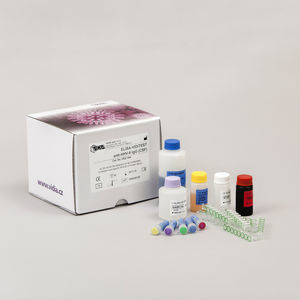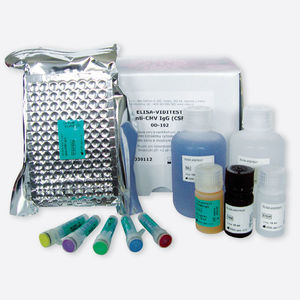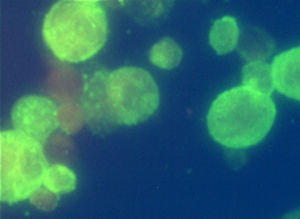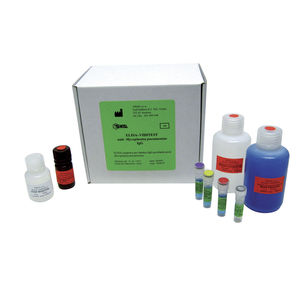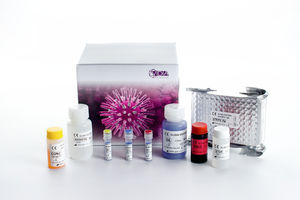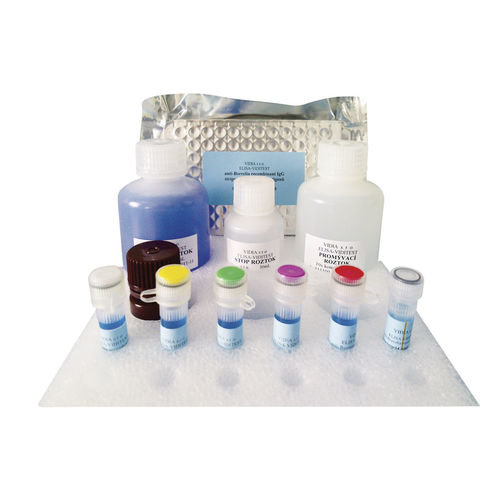
Infectious disease test kit ODZ-398IgGIgMBorrelia burgdorferi
Add to favorites
Compare this product
Characteristics
- Applications
- for infectious diseases
- Tested parameter
- IgG, IgM
- Micro-organism
- Borrelia burgdorferi, Borrelia afzelii, Borrelia garinii
- Sample type
- serum, plasma, synovial fluid, cerebrospinal fluid
- Analysis mode
- ELISA, LIA immunoassay
Description
Lyme borreliosis (LB) is a serious disease in which there is a risk of developing systemic diseases, autoimmune reactions and post-infectious disease. The causative agents are strains of the genus Borrelia. The vector of transmission is all developmental stages of the tick Ixodes. In Europe, it is a common tick (Ixodes ricicnus). The infection occurs mainly 36 hours after the tick bite. The disease is divided into several stages into early localized, disseminated and late disseminated. There are only about 10% of chronic forms in the late stage. The primary feature is a localized skin lesion, erythema migrans (50% of cases). Clinical manifestations depend in part on the type of borrelia, as each tends to migrate to other tissues. Lyme arthritis is the most common in B. burgdorferi sensu stricto (71%), neuroborreliosis in B. garinii (22%) and cutaneous manifestations in B. afzelii (5%).
About antibody dynamics
IgM antibodies are formed about 3 weeks after infection, reach a maximum in 6 weeks, then their level usually decreases, followed by the formation of IgG class antibodies. In the early phase of infection, the determination of specific antibodies is important, especially in cases where typical clinical signs are not evident. Most diseases caused by Borrelia burgdorferi are asymptomatic, which is evident in the fact that up to 10% of our population can detect anti-Borrelia IgG antibodies.
Some clinical symptoms of LB may be similar to those of other diseases, so the determination of antibodies against Borrelia is also used in the differential diagnosis of neuroinfections, arthropathy, carditis and skin diseases.
Catalogs
No catalogs are available for this product.
See all of VIDIA s.r.o‘s catalogsRelated Searches
- Assay kit
- Solution reagent kit
- Blood assay kit
- Serum assay kit
- Immunoassay assay kit
- Plasma assay kit
- Infectious disease detection kit
- Laboratory reagent kit
- Rapid lateral flow test
- Immunoassay rapid diagnostic test
- Rapid virus test
- Respiratory infection test kit
- Clinical assay kit
- Infectious disease rapid diagnostic test
- Cassette assay kit
- Rapid respiratory infection test
- ELISA assay kit
- Urine rapid diagnostic test
- Blood sample reagent kit
- Virus reagent kit
*Prices are pre-tax. They exclude delivery charges and customs duties and do not include additional charges for installation or activation options. Prices are indicative only and may vary by country, with changes to the cost of raw materials and exchange rates.


